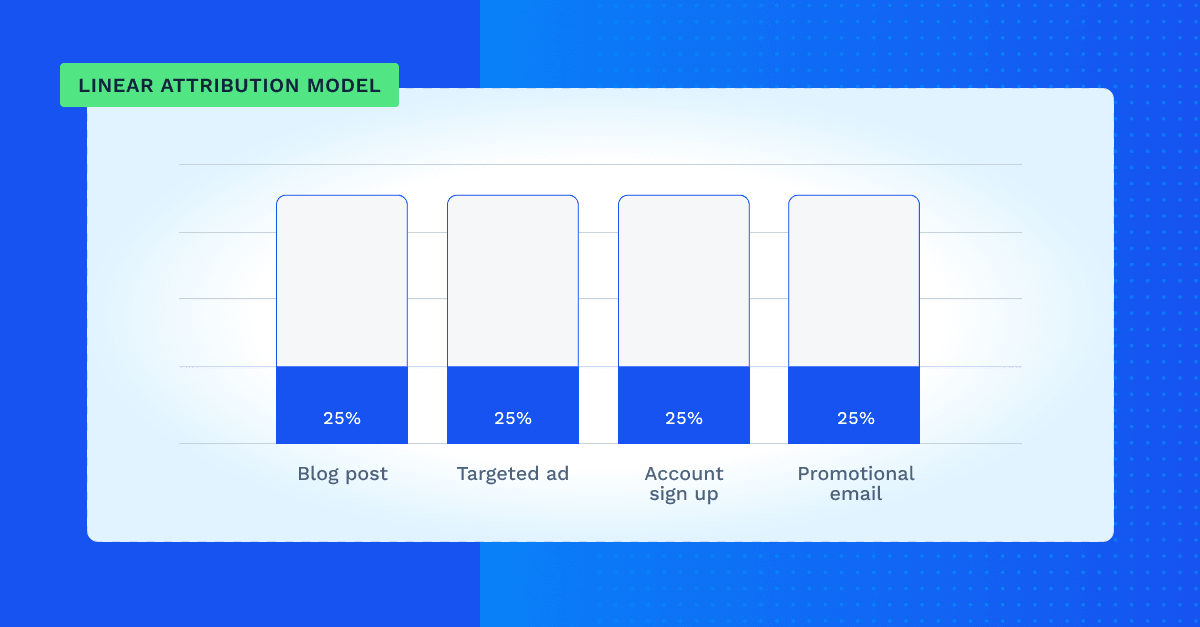Advantages of full-path modeling: This model works best for products or services with a lengthy marketing funnel or extended sales cycles. Companies that use it often sell expensive products like luxury cars or enterprise B2B SaaS platforms that require lengthy or expensive integrations and multiyear contracts.
Disadvantages of full-path modeling: This model would be overly complex for companies with shorter sales cycles that don’t distinguish between a lead — when a prospect first expresses serious interest in a product — and a sales opportunity, or when a prospect becomes likely to make a purchase.
Custom multi-touch attribution models
Custom models use rules created by the marketing organization, often combining two or more of the models discussed above.
Advantages of custom modeling: Custom models are employed by marketers who have already collected data on their buyer journeys and want to refine their understanding, optimize the most successful touchpoint, shore up less successful touchpoints, or experiment with various buyer journeys simultaneously through A/B testing.
Disadvantages of custom modeling: Custom models can be time- and cost-intensive to map out and usually require feature-rich (and expensive) marketing attribution platforms to track and manage.
Algorithmic multi-touch attribution models
Machine learning, generative AI, and statistical modeling are now being used to assign credit to various touchpoints along a user journey by identifying and interpreting customer behavior patterns rather than relying on preset rules, like the models discussed above. Algorithm-based models, also called “fractional” models, provide the most accurate and granular analysis of how marketing activity influences buyer behavior because they more closely reflect the customer journey.
The most common algorithmic models are:
• Logistic regression
Advantages of algorithmic modeling: Rules-based models are inherently subjective. They rely on marketers to decide how to assign credit to each stage in the buyer journey. But because algorithmic modeling is objective, it can provide the most accurate view of how each channel and touchpoint performs. This means the algorithmic model can recommend the best opportunities to maximize marketing budget and ad spend, and increase ROI and ROAS.
Rules-based models can also be inflexible. If a campaign is set in motion and the business goals change, changing the rule mid-stream makes comparing existing data to future data difficult. Algorithmic modeling is more fluid and can accommodate real-time changes in attribution models.
Disadvantages of algorithmic modeling: Like all machine learning models, algorithmic attribution models are only as good as the datasets used to train them. Without large amounts of high-quality data on customer attributes and behavior — and the computing power needed to process it — these models may underperform. Because of the complexity inherent in their setup and management, they require the supervision of data scientists, who often rebuild and optimize them daily and then adjust ad spend and journey orchestration in real time.










